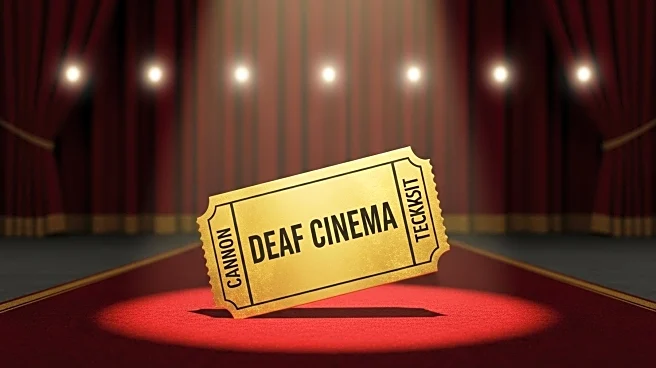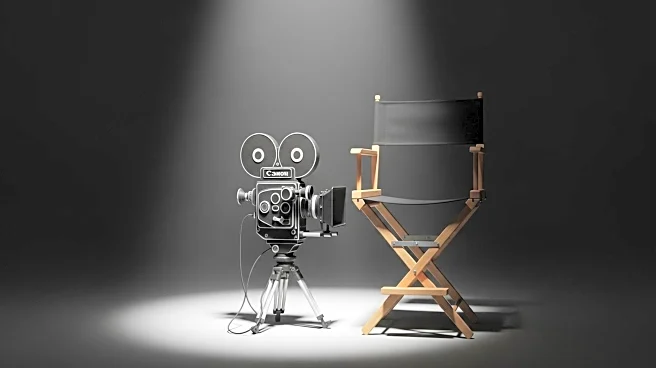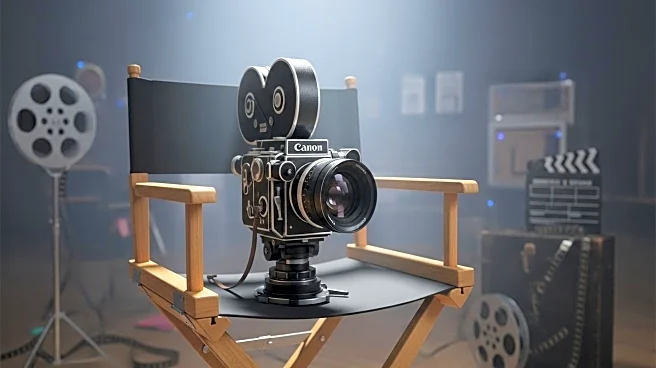What's Happening?
The film 'Retreat,' directed by Ted Evans, has premiered at the Toronto International Film Festival (TIFF) as the world's first deaf thriller. The movie, featuring an all-deaf cast, is set in the English countryside and follows the story of Matt, played by James Boyle, who is part of a secluded deaf community. The arrival of an outsider, Eva, challenges Matt's understanding of his identity and the community's hidden truths. The film is a significant step for sign language cinema, with Evans using sign language as a central narrative device. The project faced logistical challenges due to the unique requirements of filming in sign language, but it successfully brought together both deaf and hearing crew members.
Why It's Important?
The release of 'Retreat' is a landmark moment for the representation of the deaf community in cinema. It highlights the potential for sign language to be a powerful storytelling tool, offering a new dimension to film narratives. This development is part of a broader trend of increased visibility and representation for deaf actors and stories, as seen in recent successes like 'Coda' and 'Sound of Metal.' The film's premiere at TIFF underscores the growing recognition and appreciation for diverse narratives in the film industry. It also opens up opportunities for more inclusive storytelling, potentially influencing how films are made and who gets to tell these stories.
What's Next?
Following its premiere, 'Retreat' may inspire more filmmakers to explore sign language cinema and create opportunities for deaf actors and crew members. The film's success could lead to further projects that center on deaf narratives, contributing to a more inclusive film industry. Additionally, the positive reception at TIFF might encourage other film festivals and distributors to support similar projects, expanding the reach and impact of deaf cinema globally.
Beyond the Headlines
The film's production highlights the unique challenges and creative solutions involved in making a movie in sign language. It raises awareness about the need for more inclusive practices in filmmaking, such as accommodating different communication needs on set. The project also emphasizes the importance of collaboration between deaf and hearing individuals in the arts, fostering a more diverse and understanding creative environment.











